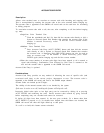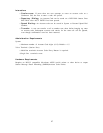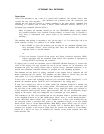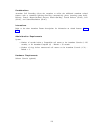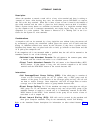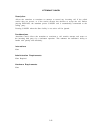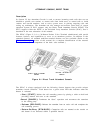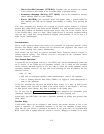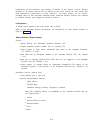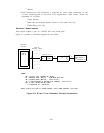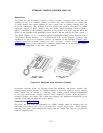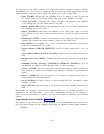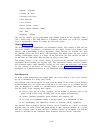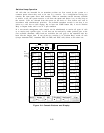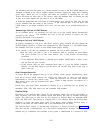● Return-On-Don’t-Answer [RTN-DA]: Extended calls not answered are returned
to the console on this button if not answered within a specified interval.
●
Attendant Message Waiting [ATT MSG]: Used by the attendant to remotely
control Message LEDs on voice terminals.
● Alarm [ALARM]: The associated status LED flashes when a system trouble has
been detected; the LED can be changed from flashing to steadily lit by pressing the
button.
Two other attendant-only features are assigned to console feature buttons if required,
Position Busy [POS BUSY] and Night Service [NIGHT]. In a dual attendant console system,
Position Busy removes an Attendant Console from service. Only one of two consoles can be
in the “Position Busy” mode at a time.
When Night Service is activated, attendant-seeking
calls can ring a night bell, can be directed to assigned voice terminals, or can be sent to a
night service announcement.
Considerations
Direct trunk operation means that trunks are terminated on individual buttons, called
Personal Line buttons, where outside calls are answered and originated. The console can
have several incoming calls ringing simultaneously.
Each console can also have an optional Attendant Direct Extension Selector Console to
enhance internal calling.
The Selector Console is described in the “Attendant Direct
Extension Selection” subsection.
Dual Console Operation:
A System 25 can be equipped with up to two DTACs that operate simultaneously when both
are in service.
If the system has two attendant consoles, one is called the first attendant
console (primary attendant console in VI); the other is called the second attendant console
(secondary attendant console in Vi). The calls in the following list will be routed to the first
attendant console.
● Dial “0” calls
● DID calls to unassigned numbers (when administered to route to the attendant)
● Calls to Floating Personal Data Codes (FPDCs) not logged in (when administered to
route to the attendant)
If the first attendant has activated the Position Busy feature or is busy on both System
Access buttons, these calls will be routed to the second console. If that console is also busy
on both System Access buttons, busy tone is provided to the calling party.
For V2 only: See the “Call Coverage—Individual” feature description for information about
simulating additional System Access buttons for handling more incoming calls.
System users and DID callers can reach a particular attendant by dialing that personal Data
Codes (PDC).
Position Busy:
A POS BUSY button can be assigned to each console; this permits selection of one of two
modes of operation:
(1) simultaneous operation or (2) only one Attendant Console active.
(Note that only one console is allowed to be inactive at any given time.) An associated POS
BUSY status LED is lighted when the console is inactive.
Ringing is disabled on all trunk
2-14



